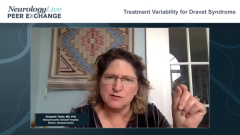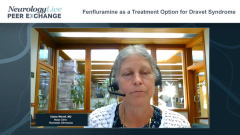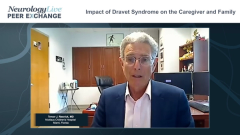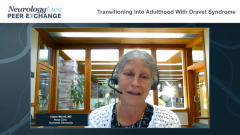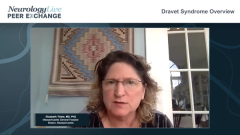
Managing Patient/Parent Expectations in Dravet
A discussion on having conversations with the parents of patients with Dravet syndrome with regards to adjustments to therapy and managing their expectations.
Episodes in this series

Joseph Sullivan, MD: Let’s say a patient’s not doing well in our opinion and we recommend a treatment change, and the response is, “I read that when someone did that for their child, it was horrible.” I’m wondering if we could each share some perceptions of some of our patients in terms of why they may be hesitant to make treatment changes, or why they may want to make a treatment change too quickly and not be patient with something we recently changed. Trevor, do you want to start that?
Trevor J. Resnick, MD: To some extent, it depends on your approach in the beginning. One thing I think is a good idea is to never say that a drug you’re going to use or a treatment approach is going to be the best treatment. I always speak to patients about a whole host of different available treatments that are effective to some extent, so that if I fail with the first one, they’re quite happy to move to the second one. There may be different reasons for why. Depending upon the presentation, parents may have a different attitude to switching. The example you brought up was a good one. Another I’ve had an experience with is when the presentation has been so devastating, with prolonged febrile, generalized, tonic-clonic seizures, status epilepticus, and admission to the hospital, that if they get onto medication A and they have seizures but they don’t come into the hospital, they’re very reticent to change because of their early experience with the seizures. It requires a lot of discussion about the consequences of the different seizure types and the goals in terms of where you want to get to, in order to get them to change. I get that reticence depending on where they come from, what they’ve read, and what their own experience is with their child’s seizures.
Joseph Sullivan, MD: Elizabeth, any personal experiences with that?
Elizabeth Thiele, MD, PhD: I agree completely. There’s a spectrum, not only with how the kids present, but the families’ attitudes and approaches. I was really impressed several years ago. We had a child come to see us who had their first seizure in the setting of fever, had the genetic panel sent, and was found to have a large deletion of SCN1A. They came to see us because they had read that the ketogenic diet could be very effective. Even though the child had only had 1 seizure and was on 1 medicine, they really wanted to start the ketogenic diet to try to be proactive. That child has done well. I have other families where the child may be having occasional brief seizures, but the family likes how alert the child is, how interactive, the gains they’re making, and they’re afraid to rock the boat. They’re afraid that any change could compromise how the child is doing overall. It’s very variable.
Joseph Sullivan, MD: Along those lines, Elaine, have you had some experience with differential expectations from families? You and I have families like this, where I would never have thought of mentioning a ketogenic diet. Although anecdotally, if it is started early in this population, it could be potentially game-changing. How do you manage expectations when you have someone who’s seemingly well controlled yet they want better control? I have this scenario, too, where they read about the catastrophic stories and say, “My son’s actually not too bad,” yet they’re still having 5 convulsive seizures a month. I don’t know how to say this with the utmost respect; do you think they know what better is? I don’t want to be judgmental, but how can we help them get on a better path?
Elaine Wirrell, MD: It’s an ongoing conversation that you have. When you’re making your initial diagnosis and when we’re following these kids, we see them pretty frequently in our offices. If new therapies come up, we have a conversation. “This is what this therapy potentially has to offer. These are the potential adverse effects.” But as I say, it is a conversation that you have with families. I do think families know their kids best. Sometimes families have come to me, and just like with Elizabeth’s example of the child with 1 seizure, who wanted to try the ketogenic diet, many families know their kids best, and so we need to listen to their concerns. It’s also important though if you have somebody who has poorly controlled seizures, that you work with the family and help them balance what the risks are: the risk of seizures, the risk of medication, and also the risk of SUDEP [sudden unexpected death in epilepsy]. In young children, we know that status epilepticus can also result, in rare cases, in severe brain edema and death. It’s important to help the families balance those risks. That’s a long conversation that you have, but it’s an important one. It’s part of what we really need to do.
Joseph Sullivan, MD: There’s one caveat I sometimes use when families will cite what they read. Maybe this is changing a little now that social media is so pervasive, but I don’t often see many families writing about good things. They’re not like, “I started this, and….” It’s more like a restaurant review. You’re more likely to say that this was a terrible experience as opposed to saying it was fine, so I try to keep that in context. Getting back to the sense of connection and community, I do try to say, “Reach out.” I’ll even put them in touch with some of my other families and try to represent a balanced view with both sides, like someone who did well on valproate and someone who did not, so they don’t feel like I’m trying to force this upon them.
Elaine Wirrell, MD: We’ve already mentioned that Dravet syndrome is pretty variable from patient to patient, but it’s also pretty variable within the same patient. You may have a kid who goes for 2 months relatively well controlled but then has a big bout of status epilepticus. You need to balance some of the little blips that happen as well and work with families to help them understand that there’s the background noise of Dravet. Just because you have a seizure when you’re on a low dose of whatever medication you’re starting, doesn’t mean that medication is going to worsen things. We sometimes need to give it a little longer.
Joseph Sullivan, MD: I try to practice some sense of vulnerability to say, “I might be wrong and you’re going to be right. I’m going to start this and Johnny’s going to do poorly.” To that point, just because we make a decision doesn’t mean that we’re not in constant contact. But try to hang in, not saying that with the first dose of the medication, everything goes awry, but to try to keep that conversation open and be flexible to pivoting. In the end, it’s about the quality of life. We’re going to get into it a bit more; it’s not just about seizures. Elizabeth, as you said, it’s seizures and adverse effects. If we have a kid who’s sleeping all day but seizure free, that’s no way for the child or the family to live.
Thank you for watching this NeurologyLive® Peer Exchange. If you enjoyed the content, please subscribe to our e-newsletters to receive upcoming Peer Exchanges and other great content right in your inbox. Thank you.
Transcript Edited for Clarity
Newsletter
Keep your finger on the pulse of neurology—subscribe to NeurologyLive for expert interviews, new data, and breakthrough treatment updates.


